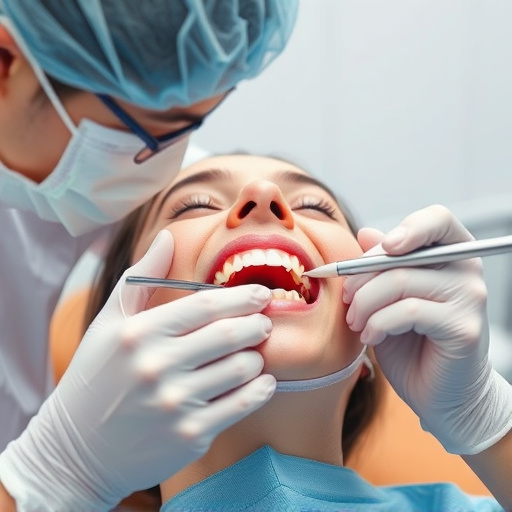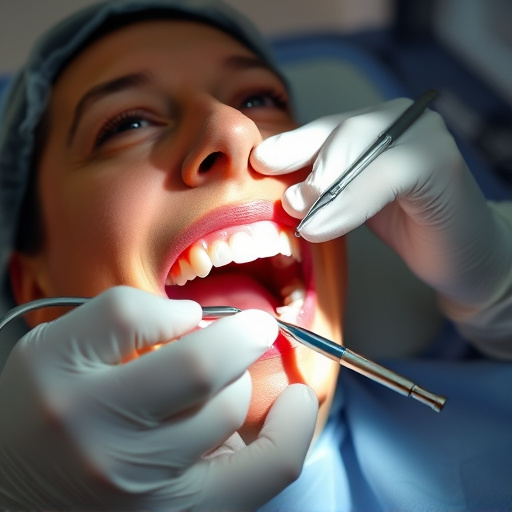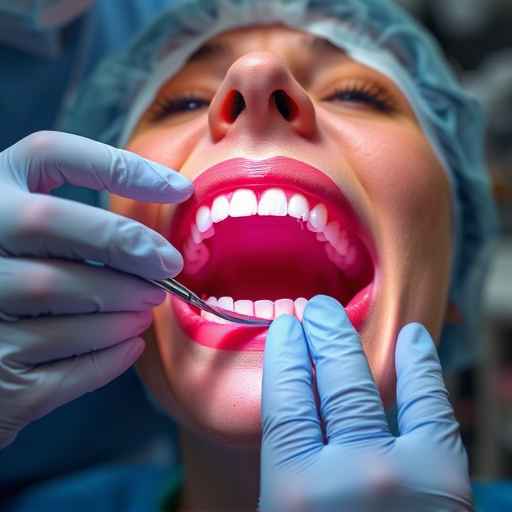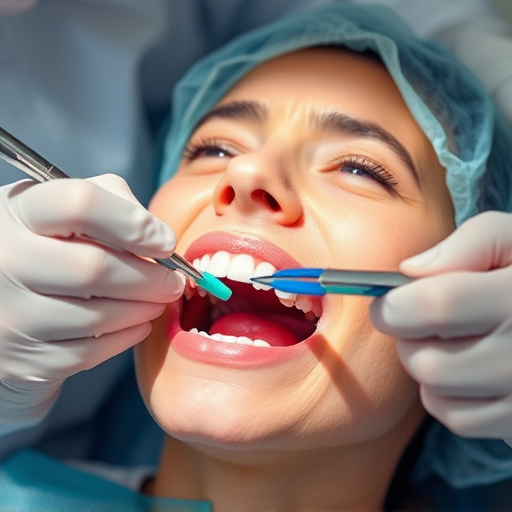Dental implants procedure involves assessment, surgical placement of titanium implant in jawbone, osseointegration, and attachment of custom restoration. Proper post-procedure care with soft diet, gentle hygiene, and regular visits ensures successful healing and long-term chewing power restoration.
Dental implants are a transformative solution for those seeking to restore their chewing power and enhance their smile. This comprehensive guide delves into the detailed dental implants procedure, from initial consultation to final placement. We’ll walk you through each step, offering insights into post-procedure care for optimal healing and exceptional results. Discover how this advanced treatment can revitalize your oral health and confidence.
- Understanding Dental Implants: A Comprehensive Overview
- Step-by-Step Guide: From Consultation to Placement
- Post-Procedure Care: Ensuring Optimal Healing and Results
Understanding Dental Implants: A Comprehensive Overview

Dental implants are a highly effective solution for replacing missing teeth and restoring chewing power. Unlike traditional dentures or bridges, which rely on surrounding teeth for support, dental implants are surgically placed into the jawbone to mimic the structure of natural teeth roots. This innovative procedure offers numerous benefits, including improved stability, enhanced aesthetics, and long-term durability.
The dental implants procedure involves several steps. Initially, a detailed assessment by a qualified dentist or oral surgeon is conducted to determine the patient’s eligibility and plan the treatment accordingly. This may include X-rays, 3D scans, and consultations to discuss expectations and potential risks. Once approved, the implant is surgically inserted into the jawbone, allowing it to heal and fuse with the bone in a process known as osseointegration. Following this, a custom-made dental restoration, often an abutment and crown, is attached to the implant, completing the restoration of the missing tooth or teeth. This advanced approach not only restores chewing functionality but also preserves facial structure and promotes overall oral health.
Step-by-Step Guide: From Consultation to Placement

The journey towards restoring your chewing power with dental implants begins with a comprehensive consultation. During this initial meeting, your dentist will thoroughly examine your mouth, discuss your medical history, and assess the health of your gums and jawbone. Based on this evaluation, they’ll determine if dental implants are suitable for you. If approved, the process starts with a surgical procedure where the implant, typically made of titanium, is placed into the jawbone. This step is crucial as it allows the implant to fuse with the bone, creating a strong foundation.
Post-surgery, a period of healing is required for osseointegration—the natural process where bone grows around the implant. Once healed, the dentist will attach an abutment, which serves as a connector between the implant and the custom-made dental restoration. This intricate step ensures a perfect fit. Finally, a customized crown, designed to match your natural teeth, is placed on top of the abutment, completing the dental implants procedure. With proper care, these implants can last a lifetime, providing functional and aesthetic benefits comparable to natural teeth, even suitable for children’s dentistry needs in the right circumstances, alongside other restorative options like dental bonding or family dentistry services.
Post-Procedure Care: Ensuring Optimal Healing and Results

After the successful placement of dental implants, proper post-procedure care is essential to ensure optimal healing and long-lasting results. Patients are typically advised to maintain a soft diet for the first few days following surgery, avoiding hard or sticky foods that could dislodge the implants. This period of time is crucial for the initial healing process as the bone starts to integrate around the implant, forming a strong foundation.
Regular oral hygiene practices remain vital, but patients must be gentle during brushing and flossing near the surgical site. Using soft-bristled toothbrushes and avoiding aggressive cleaning can prevent irritation and promote healthy tissue regeneration. Additionally, attending scheduled follow-up appointments with the dentist is critical to monitor healing, address any concerns, and ensure the dental implants procedure was a success in restoring chewing power.
Dental implants offer a lasting solution for restoring chewing power and enhancing oral health. By understanding the comprehensive overview of this procedure, from consultation to post-care, individuals can make informed decisions about their dental well-being. Embracing the step-by-step guide ensures a successful journey towards a stronger, more confident smile.














